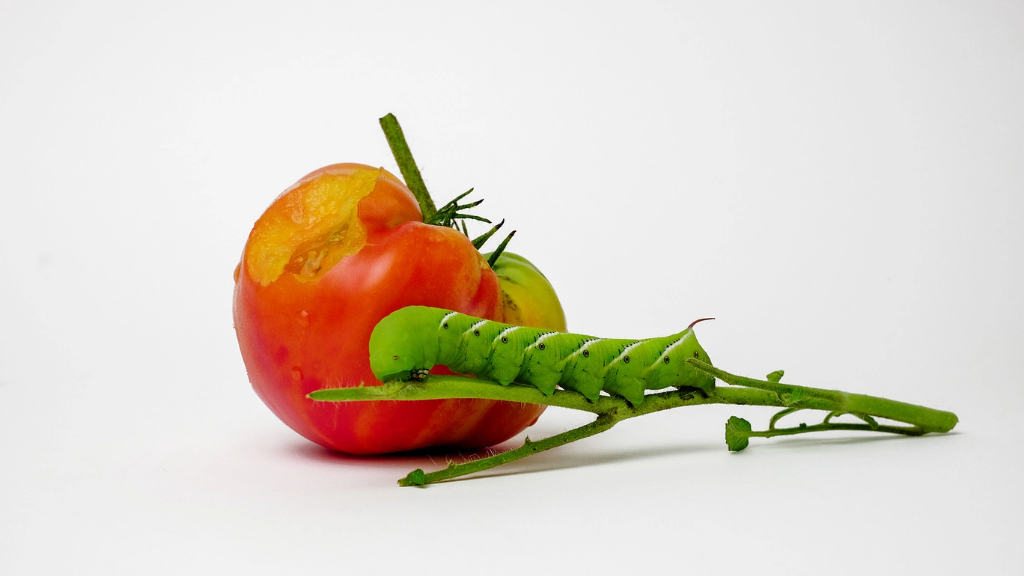
Tomatoes are one of the more popular crops to grow, and really with good reason; there are innumerable ways to use this delectable fruit. Unfortunately, you may find that you are vying with any number of Mother Nature's critters for the fruits of your labor. Yes, tomatoes are a popular crop, but they aren't only popular with your family. To keep the list short, here are the top 5 tomato plant pests busy making tomato paste out of your prized fruit: 1. Tomato Hornworm - A green caterpillar that derives its name from the horn on its posterior end, the tomato hornworm can reach 3-5 inches (8-13 cm) long. It eats its way through the entire plant, leaves and fruit, leaving large holes behind. If the infestation isn't severe, simply hand pick the worms off and kill them in a bucket of soapy water. A bit disgusting, but easily done. If the infestation is getting out of hand or you just can't fact hand picking, apply Bacillus thuringiensis, a bacterium that kills caterpillars but has not effect on people or pets. 2. Tomato Pinworm - Early stage tomato pinworm larvae feed on tomatoes and leave pinhole sized holes in leaves and fruit in their wake. Late stage larvae make a shallow burrow into the tomato, usually at the calyx or stem end of the fruit. Pinworms produce many generations during the tomato growing season. They can be combated with mating disruption techniques as well as removing and destroying any crop residue, checking transplants for signs of the pest, and insecticide applications in the late evening. 3. Cutworms - As the name suggests, cutworms get their name from the damage they wreak; cutting through stems of seedlings at ground level. If you aren't squeamish, a simple control method for cutworms is to simply pluck them from the base of the plant. You're looking for a small grub, 1-2 inches (3-5 cm) in length. Young plants can also be protected by providing the stem with a cardboard collar around the base of the stem. 4. Stinkbugs - There are several types of stinkbugs that infest tomato plants. Both nymphs and adults suck sap from pods, buds, blossoms and seeds. Immature fruit becomes malformed, seeds shrivel and become damaged with reduced germination, and fruit may also show signs of cloudy spot, a disorder caused when the bugs remove cells below the skin causing it to fill with air, become white and soft. Stinkbug management is difficult, as they favor over 52 other species of plant. Pesticides can be a management technique. 5. Snails and Slugs - Okay, they may not be the most malevolent of all the pests that can attack tomatoes, but they can maim the fruit. Deter snails and slug pests and protect the fruit by using cages or stakes to keep the fruit supported and away from the ground. Also, place slug traps around the plant.
Sign up for the Gardening Know How newsletter today and receive a free copy of our e-book "How to Grow Delicious Tomatoes".

Amy Grant has been gardening for 30 years and writing for 15. A professional chef and caterer, Amy's area of expertise is culinary gardening.
